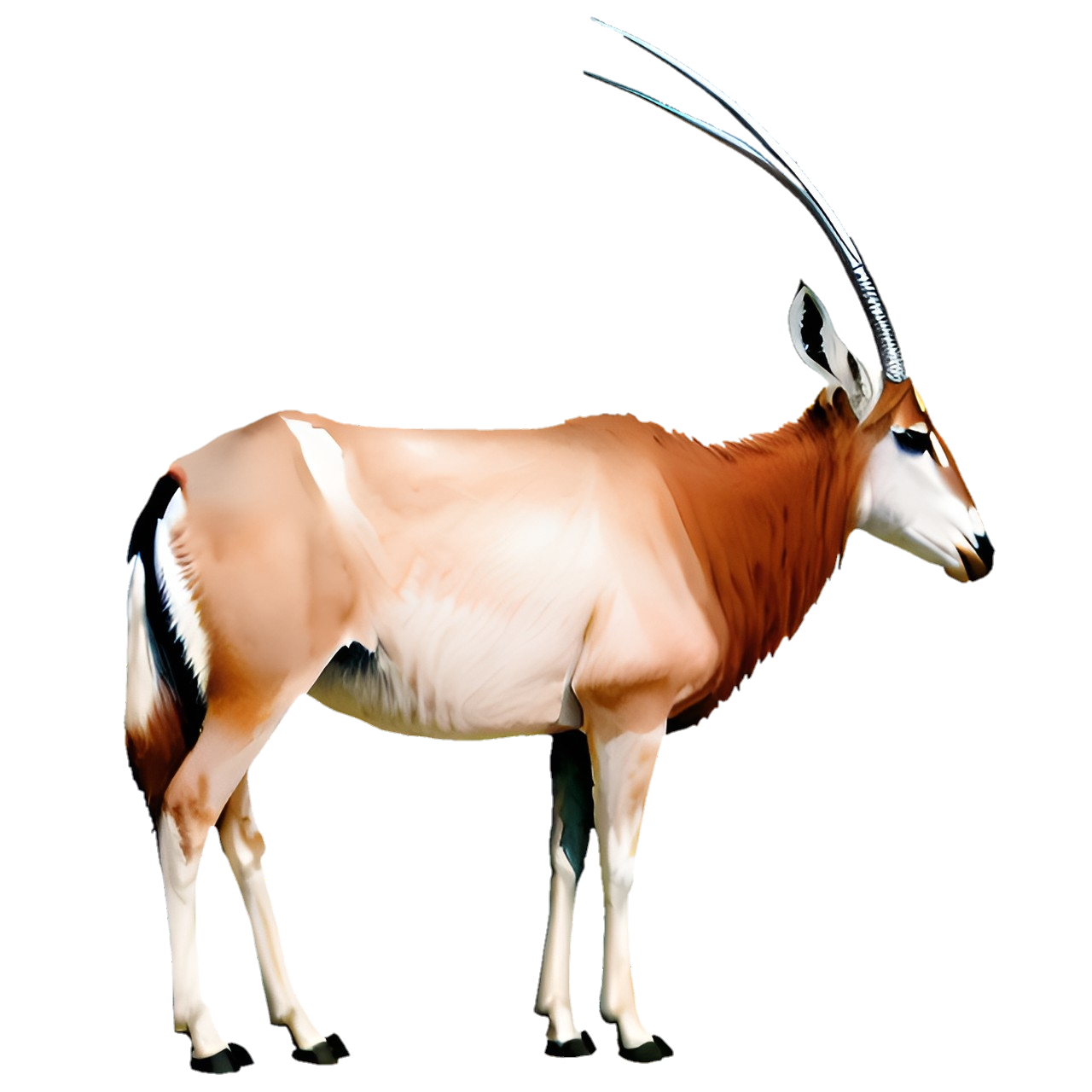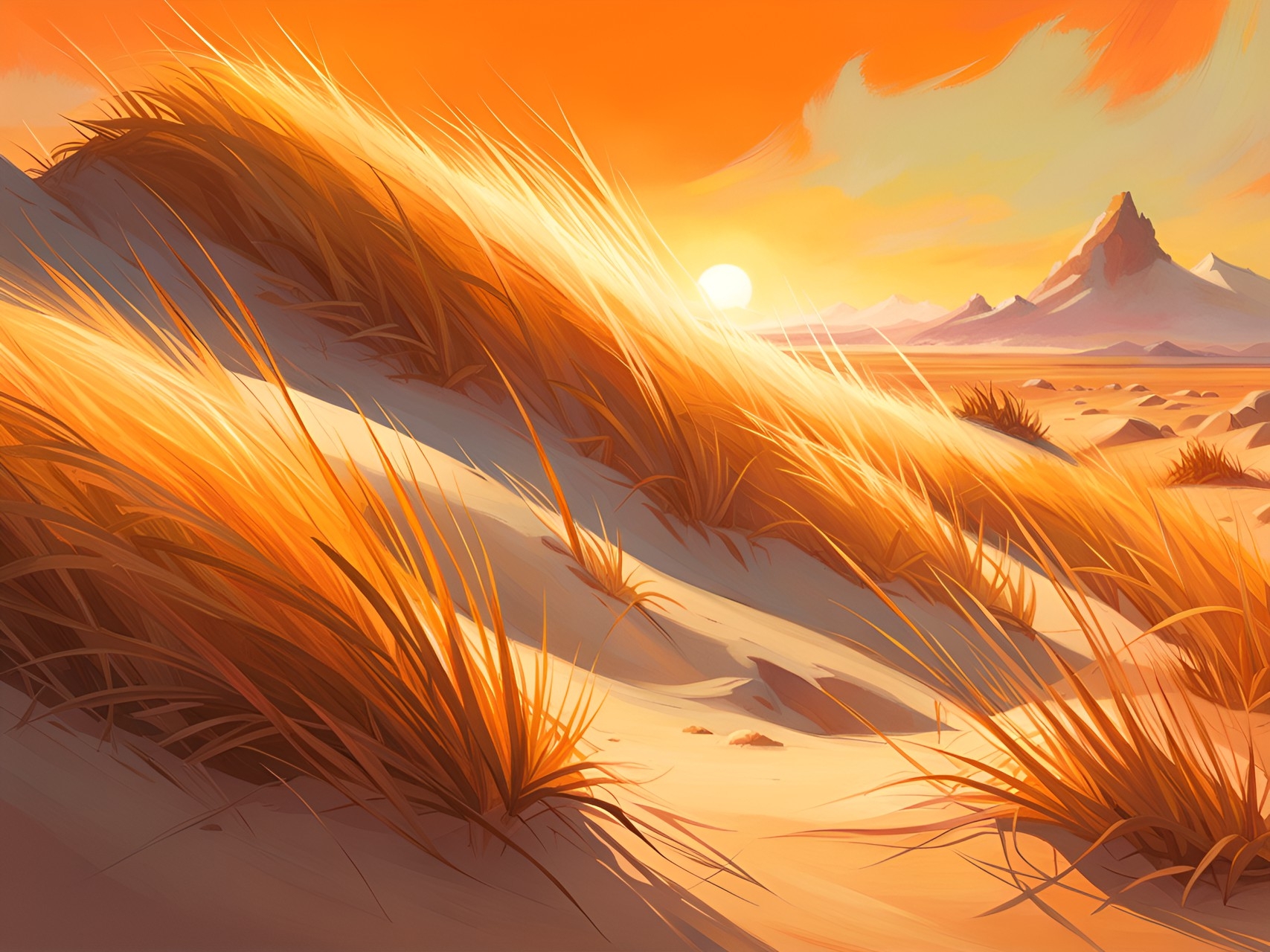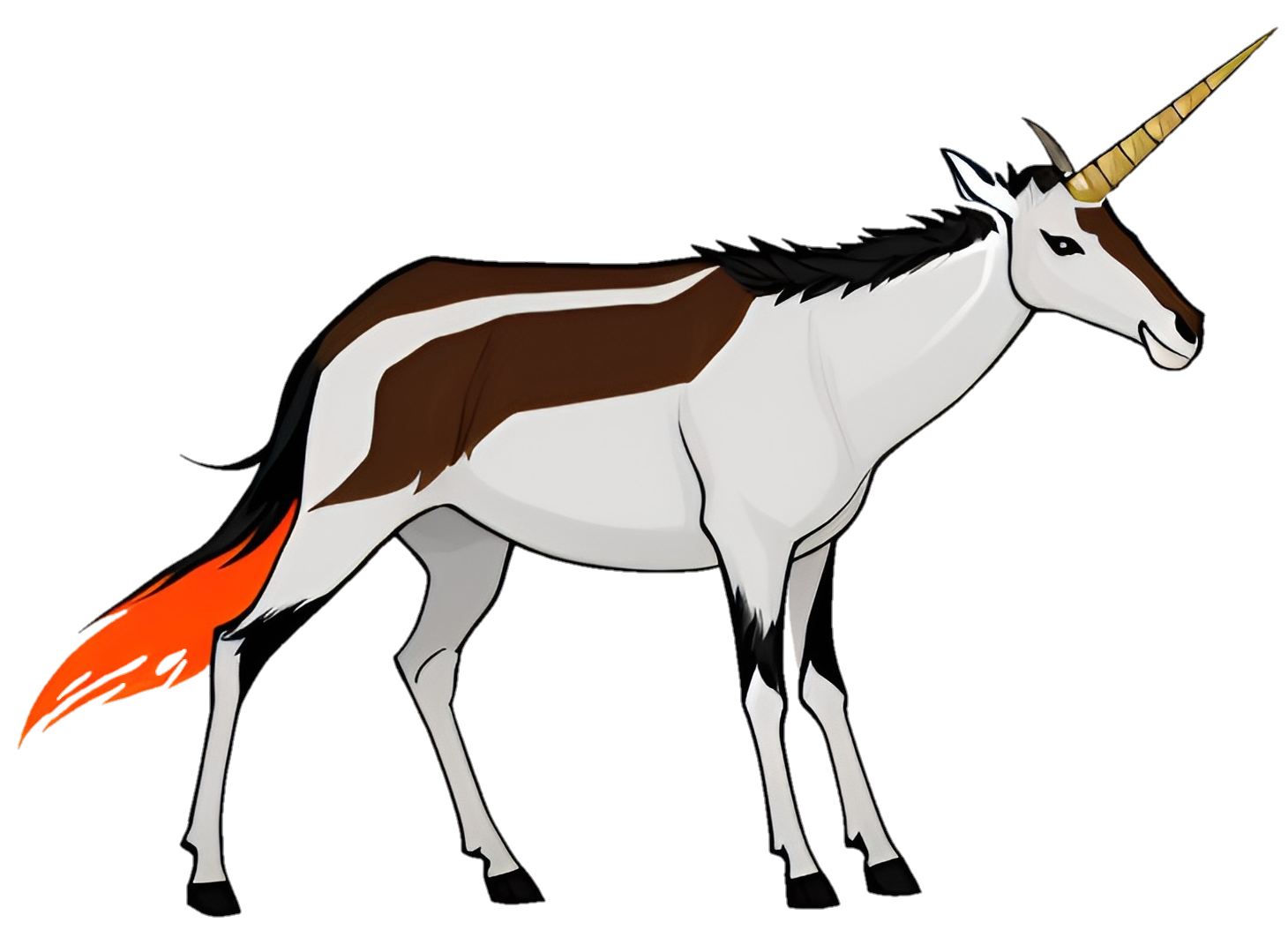Abu Qarn Oryx
In the dry and desolate sands of the Shamsi Desert, run ins with local wildlife are usually sparse and infrequent which is why encounters with these noble beasts can be a shock. The sight of anywhere from twenty to seventy oryx grazing in the moonlight or shuffling single file along the dunes may leave you befuddled or perhaps even in awe. How can so many beasts of such bulk possibly get by in these unforgiving lands? But they are well suited to their home, tolerant of the heat, the dryness and even the radiant magic of the Dunes.
Usually shy of humans, you likely won't be able to get close enough to pluck away an oryx or two for your dinner but if you do be warned—the male is not to be trifled with! While all the rest are known for their curved horns, backwards facing and narrow, the male is infamous for his single horn. It emerges form his forehead, curved and razor sharp like a scimitar. This horn is known to wield dangerous radiant energy and roaring flames alike and he possesses a spirit akin to both aspects! This single male defends his mates and his brood from wildfires and predators alike, fabled for his courage, elegance and pride. For this reason, he is sought after by hunters and beast tamers, war mount only to the noblest and purest souls.
Did you hear of the man who rode the oryx into battle? They say he was brave and courageous, wonderful and heavenly. Those who met him say he was perfect. I have no doubt he was.
Racial Magic
First Ability
Rithaldis' Manipulation
Able to manipulate and reshape radiant energy present in their environment. This particular species extracts or repels radiation using their teeth, horns and hooves. Their body will also naturally draw out residual radiant energy in the kidneys, their urine extremely radioactive. Males are known to focus radiant energy into the tip of their horn.
Second Ability
Vekaltor's Sense
(Rain)
Able to feel rain or where rain will appear even over long distances and through obstructions. They can also sense anything interacting with the rain. Often used to sense when and where to migrate. Only females inherit this.
Flithmar's Manipulation
Able to manipulate and reshape flames present in their environment, usually using their horn or hooves though they can attract or repels it with any part of its body. Only males inherit this.
Anatomy
Size
Weight
Female:201-309 lbs (91-140 kg)
Length
Height
Original Ancestor
Scimitar Oryx
Lifespan
Their white fur naturally reflects sunlight and both males and females possess characteristic scimitar shaped horns. Oddly enough, males alone have a single forward facing horn which makes them resemble a unicorn—prized by hunters. Female horns are long and narrow, curving backwards and growing to 3-4 feet (1-1.2 m) long. However, they are also hollow with thin walls, breaking easily and never growing back—those with broken horns ostracized by the herd! Finally, they have spreading hooves for walking on sand.
Coloration
Adaptions
Oryx possess a number of evolutionary adaptions outside of racial magic which allow them to survive in its desert habitat. Their metabolism functions well at high temperatures, their internal body heat 116 F (47 C) which both allows them to survive temperatures lethal to other species and keeps them from wasting water on sweat—only perspiring at temperatures exceeding their own body heat. Their blood also passes near their nasal passage, cooling by 5 F before reaching their brain, a heat sensitive organ. They also get most of their water from their diet, able to go up to ten months without drinking water directly.
Extremely sociable and gregarious, Oryx travel in herds of 20-70 individuals led by a single dominant male. There have been stories of herds of even 1,000 Oryx but usually, these are several herds migrating together. They travel deep into the Shamsi Desert during the wet season, Velaltor's Sense guiding them to the impending rains. They are nocturnal, resting during the day and grazing at night. During the day they rest under bushes or trees. Males are known to fight but not for long, bashing heads and horns but peculiarly they never cut or stab each other—as though to do so would be dishonorable! The loser will wander deep into the desert alone. They will trek long distances in search for food or water, a dominant female leading the herd single file while the male directs movements from the back. He does so in order to protect the herd from would be predators or wildfires.
Habitat
Oryx prefer grassy steppes, semi-deserts, desert, desert steppes and arid grassland. Many herds live along the borderlands between Kasar Wuta and Sahra Shamsi, fleeing into the desert when under threat. The herd also relies on the male while in Kasar Wuta amid their characteristic wildfires. Their predators include lions, leopards, Hyena, Cheetah, Wata Jackal, Masyreen Vulture and ǁKo Wild Dog. However, they mostly feed on weak and older oryx.
Diet
Oryx are herbivores, eating plant matter which includes foliage, grass, herbs, shrubs, succulents, legumes, roots, buds and fruit. Commonly eats Ramli al-Hanzal for water and grazes on Murna Acacia, Jari Tamal and Satie Drinn. Their teeth naturally expel the radiant energy in their food, repeated ruminating until purified. Any stray radiation that enters their body is drawn out by their kidneys and expelled in their urine.
Life Cycle
Calves are born between March and October, mating occuring in autumn as females are prone to postpartum estrus (in heat directly after giving birth). Males and females will perform a mating circle first, facing away from and circling each other before the male tries to approach her. She will flee if she isn't ready. Nine months later, she will leave the herd a week prior to giving birth and return within an hour of being born, the female mating again. Calves are all yellow-white until 3 months old, are weaned at 3.5 months and becomes fully independent at this point.
Domestication
...he climbed upon his oryx and shouted to his enemies, as great as the mountains behind him, as innumerous as the sand on the desert, and as strong as the oryx he rode. He charged toward his enemies, sword drawn and shield up. It was a relentless fighter against an unending enemy. The battle ended with no clear winner. Once the dust had settled, the enemy was nothing but trampled bodies, the hero's oryx was found dead, but the hero was gone.
Females have been caught and tamed through various points in Alkelbulian history, first by the Masryeen and then by the Quiris. Masyreen use them for offerings in rituals or for food while Quiris kept them in paddocks, either eating them or releasing them for dog hunts (coursing). Male oryx are far more difficult to tame, ornery and ferocious in captivity. It is impossible to break them and difficult to earn their respect or trust. There are legendary warriors and even divine beings known to have taken male oryx as war mounts, this feat passed down into myth. Lithmor and Ferith themselves were said to ride these into battle!
Material Uses
Many believe the hero's body was so damaged it was impossible to recognize. Others, however, have a small bit of hope that the hero is still alive. Running somewhere across the deserts on an oryx, shouting to the distant mountains of his arrival.
Oryx horns and hide are valuable, their hide of a superior quality and it's horns useful for a variety of purposes. Humans use their hide for shields, ropes, harnesses and saddles. Their horns have various uses for Material Magic involving radiant magic. Most commonly, their horns are made into drinking horns or cups which naturally cleanse its contents of radiation. Some even believe these horns repel or cleanse poison, conflating radiation poisoning with ordinary toxins. Otherwise, female horns are useful as dowsing rods and weather reading magic while a male's horn can be used for making flame manipulation tools, weapons and wands.












Comments